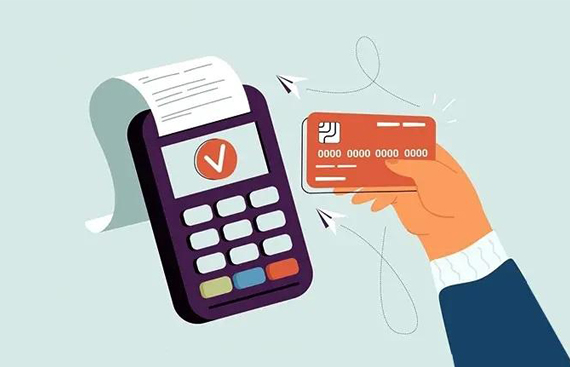Everything You Need to Know About Credit Card Swipe

Many people use credit cards without fully comprehending their terms, perks, and so forth. This lack of understanding might land people in a debt trap. It is critical to learn everything there is to know about credit cards to save money and make the most of them.
While there are many aspects to know about credit cards, today we will be focussing on "credit card swipe charges" or simply "swipe fees", which can range from 1% to 3% of the transaction value, depending on the card type. Continue to read to understand more about this.
Let's understand the terms of credit card swipe charges
Before delving into what swipe charges are, let's understand the key terms associated with it:
1. Payment gateway: A payment gateway relays information between two major players in a credit card transaction i.e. a payment portal (such as an e-commerce website) and your bank's processor. It also authorizes responses from the credit card issuing bank, including the American Express Credit Card, to the payment gateway. This information exchange occurs at the payment gateway.
2. Payment processor: A payment processor connects the merchant with the issuing bank. The payment processor safeguards payment-related information and transmits it to third parties.
3. Credit card network: Merchants can contact the issuing bank via the credit card network. Credit card swipe fees are also set by the credit card network.
4. Issuing bank: The bank that issues your credit card is referred to as the "issuing bank." For example, if you obtain an American Express credit card, American Express Bank will be the issuing bank.
5. Acquiring bank: The acquiring bank accepts credit card transactions made by you. The acquiring bank is a member of a credit card network and accepts transactions on the network on behalf of the merchant.
Credit card swipe charges are set by the credit card network, which includes the issuing bank. The credit card network determines a credit card swipe cost, often known as an "interchange fee."
How are we charged when we swipe our credit cards?
Have you ever wondered what happens when we swipe our credit card at a Point of Sale (PoS) machine? Let's understand it step by step:
- The cardholder swipes their credit card at a PoS terminal. The PoS terminal contains a "card reader" that reads credit card information. This information is collected by the merchant using a payment gateway.
- The payment gateway sends transaction information to the payment processor.
- This information is forwarded to the credit card network by the payment processor.
- This information is received by the issuing bank, which confirms the card data. After determining whether the card has the required balance and checking for any fraudulent details, the issuing bank notifies the credit card network whether it authorizes or denies a transaction.
- The credit card network forwards this information to the payment processor, which forwards it to the card reader.
Impact of Swipe Charges on Customers
While merchants pay swipe fees directly, they might have an indirect impact on customers. To offset these fees, some merchants may raise product or service pricing, resulting in a slight rise in overall cost for customers. However, understanding the swipe costs or interchange fees connected with credit card transactions has various benefits:
Informed decision-making: Being aware of swipe costs allows customers to make informed decisions when using credit cards. This knowledge is very valuable when selecting whether to use credit or cash for a purchase, especially since shops may charge customers for swipe charges.
You will be able to understand total cost: Understanding swipe charges helps you understand the overall cost implications of using a credit card. It is not just about the buying price, but also about the extra fees involved during transactions. This understanding is essential for good financial planning and budgeting.
Helps businesses in negotiating better rates: Understanding swipe charges of credit cards can help business owners negotiate better rates with banks or choose the most cost-effective payment processing services, thereby lowering operational costs.
Increasing the value of incentives: Customers can compare the cost of swipe charges to the rewards or benefits provided by the card. If the benefits outweigh the expenses, it makes sense to keep using the card; otherwise, it may be more cost-effective to hunt for alternative payment methods.
Avoiding billing statement surprises: Regularly tracking swipe expenses helps to avoid billing statement surprises. Users can manage their money accordingly and prevent the shock of unexpected expenses if they foresee additional charges. Knowledge of swipe charges leads to more informed financial decisions, whether for personal or business purposes. It assists in maximizing the benefits of using a credit card while reducing avoidable expenses.
Making credit card payments for example, of American Express Smartearn Credit card online is convenient and often results in lower swipe charges. For credit card users, banks provide user-friendly online payment methods.
So we are saying,
The key to efficiently utilising your credit card is to study everything about the product, including aspects like swipe charges and other credit card charges. Knowing the specifics of swipe charges is a key step in realizing the full potential of a credit card and how to effectively use it to your advantage. Being aware of these fees allows consumers to make the most of their Credit Cards while avoiding unpleasant surprises on their billing statements.
